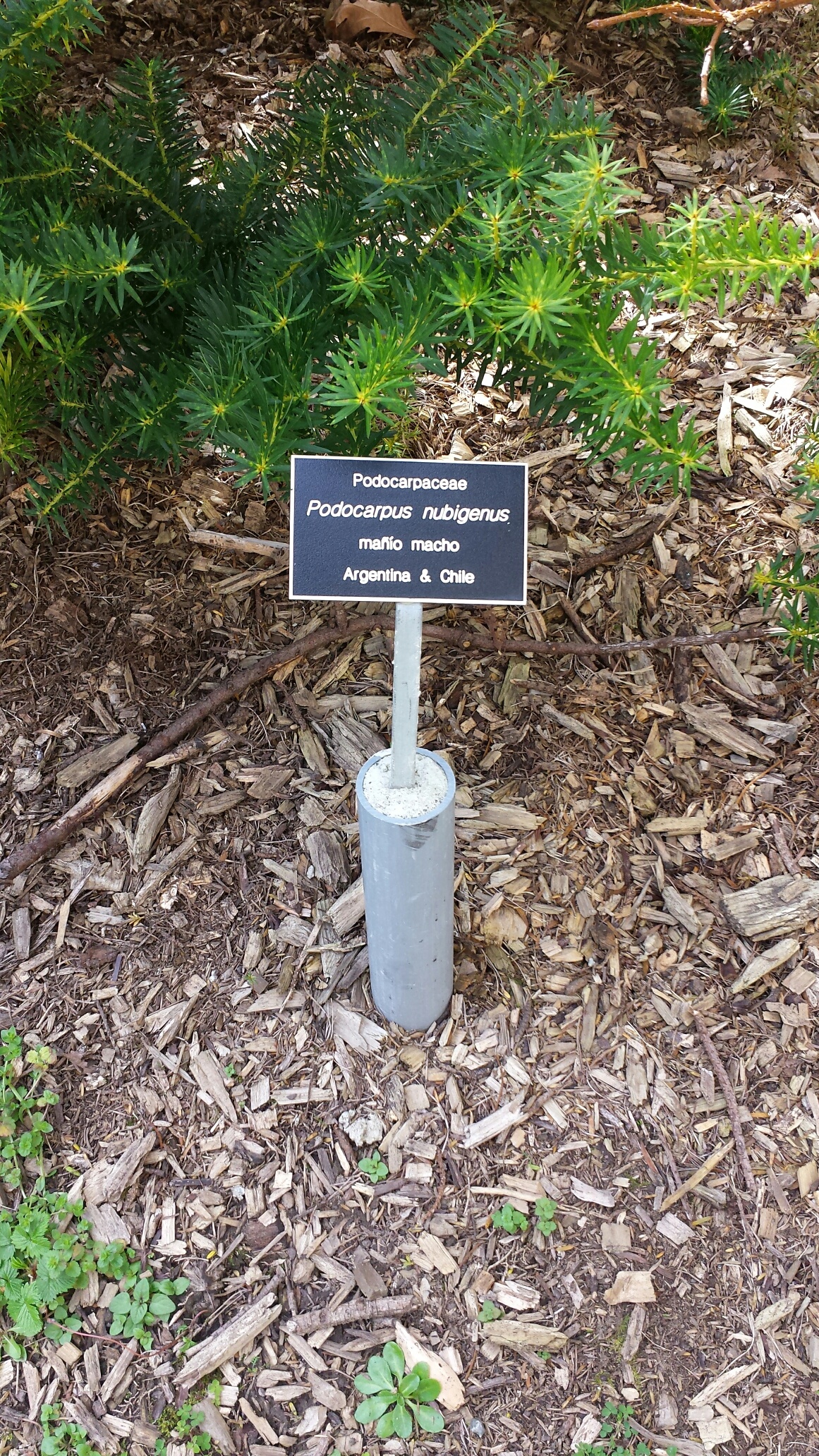Chilean Podocarp
(Podocarpus nubigenus)

Description
Podocarpus nubigenus (also known as Podocarpus nubigena) is a species of podocarp, endemic to the Valdivian temperate rain forests of southern Chile and adjacent southwestern Argentina. It is the southernmost podocarp in the world, It grows from 38- to Ultima Esperanza (53- South latitude), It grows in wet and swampy soils. It can settle clear grounds, with a faster growth than the other Chilean podocarpaceae.It is a medium to large tree, growing to around 20-25 m (66-82 ft), exceptionally to 35 m (115 ft). The bark peels off in papery flakes, with a purplish to golden brown hue. The sharp, green needle-like leaves are stiff and leathery, 2 cm long. The cones are highly modified with 2-4 fused, fleshy berry-like juicy scales, bright red when mature, bearing one (rarely two) rounded seeds at the apex of the scales.In a classic example species-pair of the Antarctic flora, it is very closely related to Podocarpus totara from New Zealand, to the extent that if planted together, they are very difficult to distinguish. The best distinction is the slightly brighter green tone of the leaves, compared to the more greyish-green of P. totara.
Taxonomic tree:







